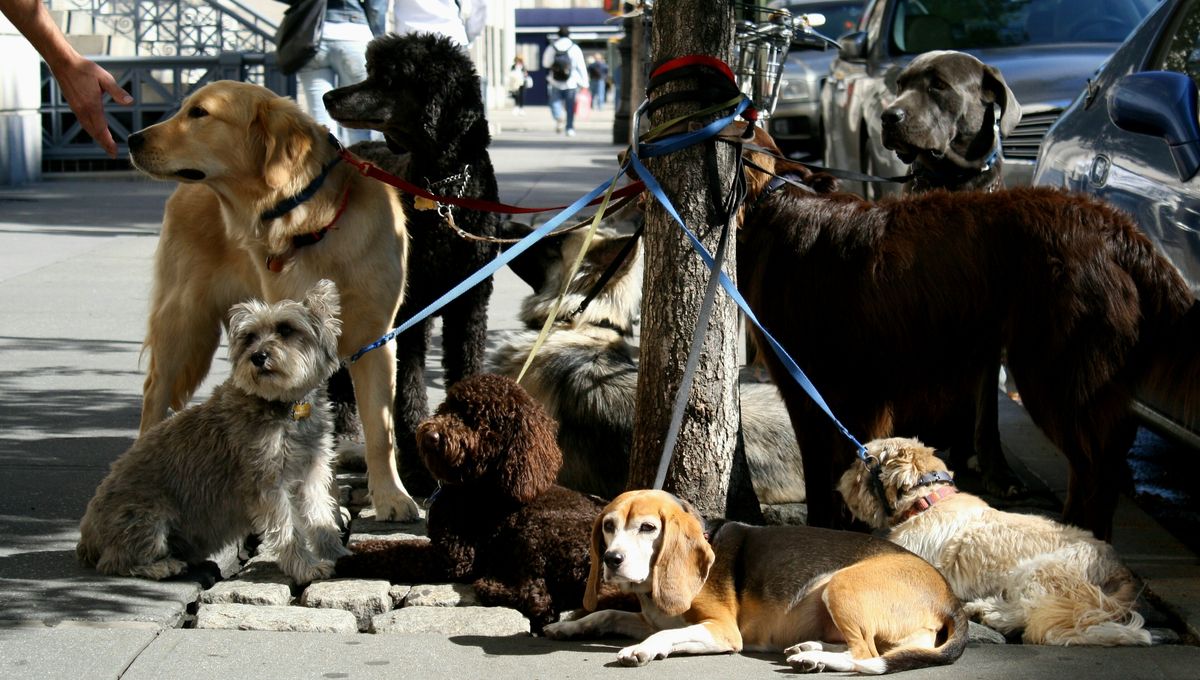
Sidewalks in New York City are absolutely covered in bacteria from dog poop. That’s the not-altogether-surprising finding of a new study, which also makes one very clear recommendation to residents.
“Taking your shoes off is a no-brainer,” first author Alessandra Leri told Gothamist. “Shoe soles are disgusting.”
Leri, along with colleague Marjan Khan at Marymount Manhattan College, set out to perform what they describe as “the first comprehensive study of how bacteria from widespread faecal contamination enters the indoor environment in New York City.”
They used a technique normally employed for testing water quality, measuring the concentration of bacteria in the genus Enterococcus as well as fecal coliforms. Samples were taken from the floor surfaces inside a school building, the shoe soles of the building’s occupants, and the sidewalks outside.
In Leri’s words, the outdoor sample collection involved “a lot of crouching on the sidewalk with sterile pipettes.” Indoors, they used sticky tape to sample various carpeted and uncarpeted floors, and rinsed bacteria from the soles of willing volunteers using sterile liquid. The collected bacteria were cultured in the lab, feasting on fluorescent compounds that would allow them to be visualized under the microscope.
The average Enterococcus count in samples of rainwater from the city sidewalks was 31,000 per 100 milliliters – that was despite the fact that the researchers were careful to choose areas that didn’t look visibly contaminated. “The [Environmental Protection Agency] has a benchmark that cities use to close beaches and that benchmark is 110 cells for 100 milliliters of water,” noted Leri, speaking to CBS. Clearly, no one is going swimming in puddles, but it’s still an indicator of just how much bacterial contamination is out there.
Indoors, the concentrations of fecal bacteria were positively correlated with the level of foot traffic in each area. Carpets also harbored more bacteria in general than hard floors. The researchers also found evidence of fecal bacteria on shoe soles, noting that this was consistent with previous studies that have reported microbial contamination of shoes in hospitals and other settings.
Dog ownership has skyrocketed in New York City since the start of the pandemic. Despite fines of $250 for those found guilty of failing to clean up after their pups, one resident told the New York Post that dog poop “just seems like it’s everywhere. […] It’s not great seeing piles of it. You’re always kind of dodging on the sidewalk.”
For Leri and Khan, there’s one obvious way to stop unwanted microbial hangers-on at the door. “Removing shoes inside the home is likely the simplest strategy to prevent dispersion of faecal bacteria within the residential environment,” they write.
And when it’s time for Fido’s next walkies, don’t forget the poop bags.
The study is published in Indoor and Built Environment.
Source Link: There’s Something “Rampant” On New York Sidewalks, Scientists Warn